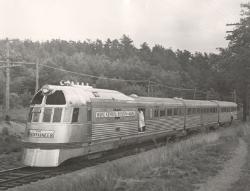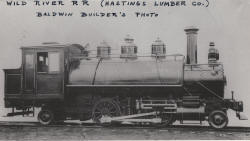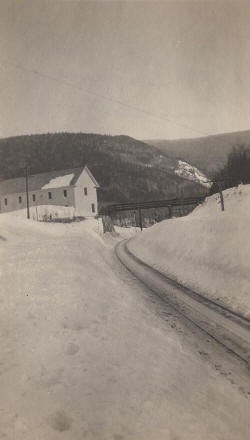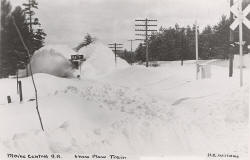

|
SEE ALSO: Scott Mallett BARTLETT ROUND HOUSE PRESERVATION CLUB BLOG BARTLETT ROUND HOUSE PRESERVATION CLUB BLOG |
|
Our Railroad historian is SCOTTY MALLETT.
He is Re-organizing our railroad section. click over to see what he has done so far. Scottys Work |
Railroads
 The new Flying Yankee as pictured in the 1930s, sometimes labeled on the front as the "The Mountaineer. The Flying Yankee was built in the Great Depression to revive interest in rail travel in New England. The train was a high-tech achievement of its day. It had a recently improved stainless steel skin, was lightweight, had steam heat for the 1340 (?maybe 340???) passengers and air conditioning. Other modern features included a 600-horsepower diesel engine and the electric grill in the dining car. At 200 feet and 100 tons, it was the racing model of its time. Depending on its destination and route - with stops including Boston, Troy, NY; Portland and Bangor, ME; Crawford Notch and Littleton, NH; and in the Berkshire Mountains in Massachusetts - the sleek train was known as the Flying Yankee, the Mountaineer, the Cheshire, the Businessman and the Minuteman. The train was jointly operated by the Boston & Maine and the Maine Central Railroads until being retired on May 7, 1957, after some 2.8 million miles of passenger service. In 1993 it was purchased by Robert S. Morrell of Glen, NH with the idea of restoration. He formed the 501(c)(3) nonprofit Flying Yankee Restoration Group to assist in having the restoration become a reality. You can read about the restoration efforts of the Flying Yankee, one of only three articulated streamliners left in the world by following this link: The Story of the Flying Yankee
Railroad Page 1
Railroad Page 2 Railroad Page 3 Railroad Page 4
Our Railroad historian is SCOTTY MALLETT. He is Re-organizing our
railroad section. click over to see what he has done so far.
Scottys Work
We are slowly consolidating these older pages with
scotty mallett's improved section |
Our Web Site Users Respond: Before the days of OSHA and the Railroad equivalent , The Federal Railroad Office of Safety, almost every paper in the 1800s would have items referring to accidents that had occurred. The following is a copy of the text in the Portland Daily News for May 3, 1883:
Accidents Charles H Weeks, an engineer on the Portland and Ogdensburg, was off duty last Saturday, and while walking down the track in Bartlett, accidently fell through a culvert. He struck his nose on the side, and crushed it. One could speculate various circumstances of why and how he happened to be walking the tracks in the dark. Dave Flewelling |





